 |
 |
 |
 |
 |
 |

|  |
 |
 |
 |
 |
 |
 |
 |
 |


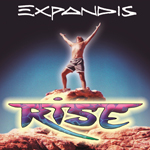
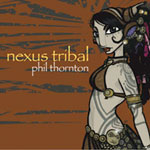
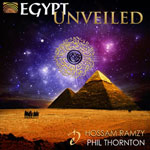
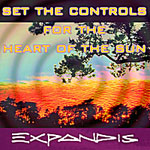

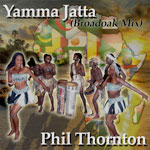

 |
|
Enchanted Egypt
An Interview with Phil Thornton by New
World Music - November, 2004 |
 |
|
New World Music: Phil this is your third collaboration with Hossam. How did the two of you meet? I first became aware of Hossam’s work through his playing on Peter Gabriel’s album ‘Passion’ (the sound track to the film ‘The Last Temptation of Christ’). From that moment I sought out his name on other albums and discovered more about authentic Egyptian music from his own productions. I kept his name in mind as someone I would love to work with and was eventually introduced by James Asher whose album ‘Globalarium’ we had both played on. We found we had a lot of ideas in common and a shared love of Egypt’s musical identity. Colin and Carmen Willcox had already asked me to record the ‘Pharaoh’ album for New World Music, which in turn had fed my enthusiasm for the music of Egypt. They encouraged Hossam and I to try working together and the result was the album ‘Eternal Egypt’. The success of this album inspired us to develop our collaborative sound further by recording in Cairo and using more Egyptian musicians. Hossam was busy playing live and recording with some of the best artists in the world (Led Zeppelin, The Gypsy Kings, Peter Gabriel etc.) as well as developing his reputation as one of Egypt’s top artists by producing his own music with his group the ‘Egyptian Ensemble’. During this period we were able to find time to record some great sessions in Cairo that eventually evolved in to our second album ‘Immortal Egypt’. NWM: How does the creative process work when you two work together? There is no set formula really; sometimes we will have an idea for a track and then work out how to get a good performance recorded, and sometimes we will just start with a rhythm or melody and see what happens. With most songs we will create the arrangement and record the musician’s improvisations leaving Hossam’s performance till last. He is then able to respond to the playing in a very natural way. I think this approach helps give the music a great sense of ‘drama’, and a very natural pace. Another recent development is the use of laptop computers in the recording process which has allowed us to work together in different locations in a much more fluid and creative way. We have both been using software to record and arrange music for some years now so the process is becoming increasingly transparent. MWM: Can you tell us about the new album? What are the themes, and how does it differ from Immortal and Eternal Egypt? Hossam and I have drawn our inspiration from a wide variety of sources, everything from astronomical events, historical figures etc. to the desert itself. We have included performances by members of the ‘Gypsies of the Nile’ group, and this has created a new flavour which compliments the instrumentation we developed on the previous albums. Apart from that I think the biggest difference would be that Hossam now has his own studio in Cairo so we were able to bring musicians in while the songs were being developed, sometimes bringing people back several times to fill in gaps or create new improvisations as the arrangements came together. Hossam now has a fantastically creative group of musicians, with whom he works regularly; many of them have recorded exceptional solo albums showcasing their individual styles and presenting the beauty of their respective instruments. This new group of musicians were invaluable in allowing us to take our compositions a stage further. In particular the addition of the qanun and magrouna to our sound palette has been a huge inspiration. NWM: What is it about Egyptian music that draws you to it? I feel I am very fortunate to have had an upbringing in a household where I had the opportunity to hear music from around the world and learn about other cultures and religions etc. My mother helped to make ends meet by taking in students who introduced me to all sorts of music including the sounds of the Middle East, so from an early age I have enjoyed this kind of music. In particular the exotic scales and ornamentation seemed to resonate with me somehow. I have always enjoyed ‘blues’ music and there is a very similar feel at work in Egyptian music, particularly in the soloist’s improvisations. I think the fact that it was so different to the music available in England at the time made it all seem very fresh and exciting. NWM: I see you are using a number of Egyptian musicians on the album. How have you found working with them and how has it affected the music? All the musicians featured on the album have worked with Hossam before so it was really a case of making sure we had prepared our ideas ready for their input. I think the recording environment and approach helped to make it easy for them to give their best performances. I am fascinated by the ancient origins of many of the instruments, such as the ‘aud’ (known as the ‘Sultan’ or ‘King’ of instruments) and the ‘nay’ (arabian flute) examples of which have been found in ancient burial chambers. The chance to work so closely with the musicians was really good for getting to know them all and learn about the instruments themselves. I think the end result is an album that reflects the traditional nature of these instruments while allowing for some unusual combinations such as the desert gypsy sound of the ‘magrouna’ leading the melody on the title track in to a jazz influenced accordion solo over a 7/4 rhythm! NWM: Egyptian music is fast growing in popularity as is the interest in belly dancing is this album suitable for this sort of activity? I think the up tempo nature of this album will certainly encourage dancing as a listening activity! Hossam was able to preview our ideas and arrangements to professional dancers from all over the world who received our work with great enthusiasm. Many of the songs are based on traditional rhythms such as ‘Saidi’, ’Zaar’ and ‘Maqsoum’. Hossam has also invented some really ‘funky’ new rhythms so hopefully there is something for every one here!. NWM: Thanks for talking to us, do you have any message for your many fans amongst the friends of New World Music? The warm reception my music has received from the friends of new world music over the years, particularly with albums like ‘Initiation’, ‘Tibetan Horn’, and ‘Shaman’ etc. has been a great inspiration to me. This invaluable feedback has encouraged and guided me into producing music, which I hope enhances New World Music’s reputation. My enthusiasm for working with ethnic music from around the world continues to grow. I feel that without your help I would not have such a strong sense of direction and focus! Thank you with all my heart. Phil Thornton |
|
